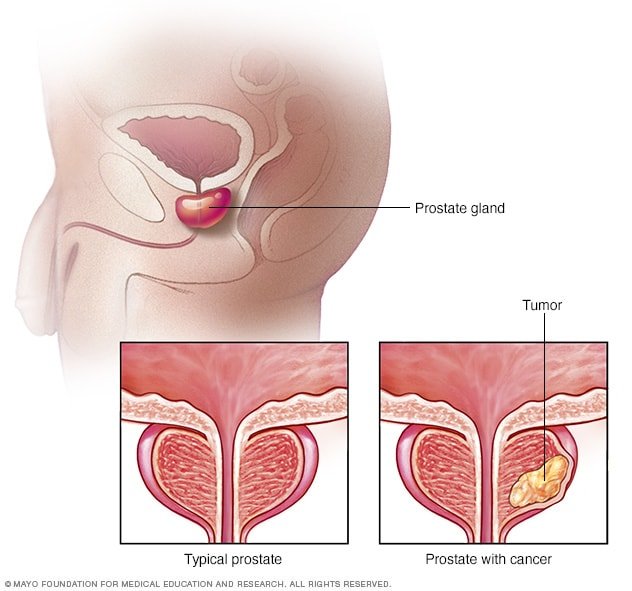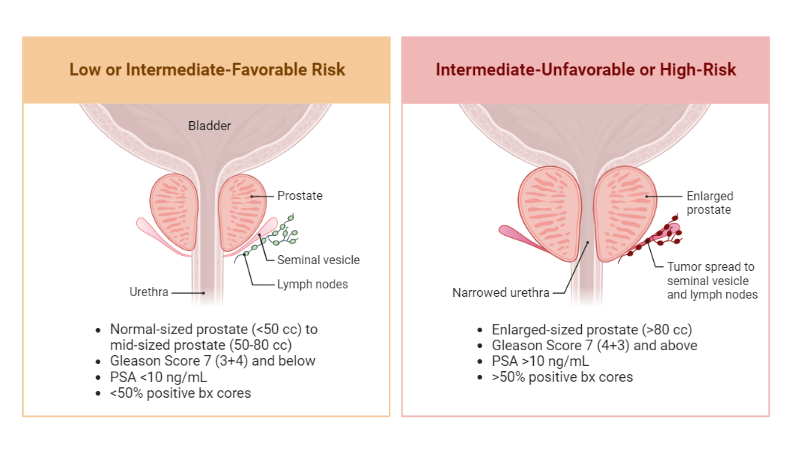Introduction to High Risk Prostate Cancer:
High risk prostate cancer is a growing concern among men, especially those over the age of 50. Prostate cancer is one of the most common cancers in men worldwide, and its risk increases due to factors like age, family history, genetics, and lifestyle choices. Despite advancements in medical science, many men remain unaware of their susceptibility to this disease.
Early detection is crucial for effective treatment, yet many cases are diagnosed at later stages when the cancer has already spread. Understanding the risk factors, symptoms, and preventive measures can significantly help in reducing the mortality rate associated with this condition.

Risk Factors That Increase the Chances of Prostate:
Cancer Several factors contribute to the high risk of prostate cancer, making some men more susceptible than others. One of the most significant risk factors is age. Studies show that prostate cancer is rare in men under 40 but becomes more common after 50, with the highest risk occurring in those above 65. Family history also plays a crucial role; men with a father or brother who had prostate cancer are more likely to develop the disease.
Additionally, genetics can influence risk levels, with certain gene mutations increasing the chances of aggressive prostate cancer.Race and ethnicity also affect risk, with African American men having the highest incidence rates compared to other groups.
Lifestyle choices, such as a diet high in red meat and processed foods, obesity, and lack of physical activity, further contribute to an increased risk. Exposure to harmful chemicals and smoking have also been linked to prostate cancer development. Understanding these risk factors can help men make informed decisions about their health and take preventive measures.
Symptoms and Early Warning Signs of Prostate Cancer:
One of the biggest challenges with the high risk of prostate cancer is that it often develops silently in its early stages. Many men experience no symptoms until the cancer has advanced, making regular screenings essential.
However, some warning signs may indicate a problem. These include difficulty urinating, weak or interrupted urine flow, frequent urination (especially at night), pain or burning during urination, and the presence of blood in the urine or semen.In more advanced cases, prostate cancer can cause pain in the lower back, hips, or pelvis.
Some men may also experience unexplained weight loss, fatigue, or erectile dysfunction. Because these symptoms can be mistaken for other conditions, such as an enlarged prostate or urinary tract infections, it is crucial to consult a doctor if any of these signs appear.
Diagnosis and Screening for Prostate Cancer
Given the high risk of prostate cancer, regular screening is vital, especially for men over 50 or those with a family history of the disease. The two primary screening tests are the Prostate-Specific Antigen (PSA) test and the Digital Rectal Exam (DRE). The PSA test measures the level of PSA in the blood, with higher levels potentially indicating cancer.
However, PSA levels can also rise due to other prostate conditions, so further testing may be needed.A DRE involves a doctor manually checking the prostate for abnormalities. If either test suggests a problem, additional tests like MRI scans, biopsies, or genetic testing may be conducted to confirm the diagnosis. Early detection significantly improves treatment success rates, making regular check-ups a crucial part of men’s health.
Prevention and Lifestyle Changes to Reduce Risk:
Although some risk factors for the high risk of prostate cancer—such as age and genetics—cannot be changed, adopting a healthy lifestyle can help lower the chances of developing the disease.
A diet rich in fruits, vegetables, and whole grains provides essential nutrients and antioxidants that may protect against cancer. Reducing the intake of red meat, processed foods, and high-fat dairy products can also decrease risk levels.Regular exercise helps maintain a healthy weight and reduces inflammation, both of which are linked to a lower risk of prostate cancer.
Avoiding smoking and excessive alcohol consumption further improves overall health. Some studies suggest that certain supplements, such as vitamin D and omega-3 fatty acids, may also have protective effects, though more research is needed.For men with a high risk of prostate cancer, discussing preventive measures with a healthcare provider is essential.
In some cases, doctors may recommend medications or more frequent screenings to monitor prostate health closely. Staying informed, leading a healthy lifestyle, and undergoing regular medical check-ups can make a significant difference in preventing and managing prostate cancer.

Symptoms of High-Risk Prostate Cancer: Early Warning Signs to Watch For:
The high risk of prostate cancer means that men, especially those over 50 or with a family history, should be aware of the symptoms. Prostate cancer often develops slowly and may not show symptoms in its early stages. However, as the cancer progresses, it can cause noticeable changes in urinary function, sexual health, and overall well-being. Recognizing these warning signs early can lead to prompt diagnosis and treatment, improving the chances of a successful outcome.
1. Changes in Urination Patterns:
One of the most common early signs of prostate cancer is urinary problems. Since the prostate is located near the bladder, any growth or enlargement can affect normal urination. Symptoms related to urination include:
Frequent urination, especially at night (nocturia)Difficulty starting or stopping urine flow,Weak or interrupted urine stream,Feeling like the bladder is not completely empty after Uri nation pain or burning sensation during urination (though this is more common with infections)These symptoms may also be caused by an enlarged prostate (benign prostatic hyperplasia), but they should never be ignored, especially in men at high risk of prostate cancer.
2. Blood in Urine or Semen:
The presence of blood in the urine (hematuria) or semen (hematospermia) can be an alarming sign of prostate cancer. While these symptoms may also result from infections or minor injuries, persistent or unexplained bleeding should always be checked by a doctor.
3. Erectile Dysfunction and Sexual Problems:
Men with high risk of prostate cancer may experience issues related to sexual health. Erectile dysfunction (difficulty achieving or maintaining an erection) can be an early warning sign, especially if there is no prior history of such problems. In some cases, men may also experience:
Reduced semen production during ejaculation Pain or discomfort during ejaculation Loss of libido or changes in sexual function These symptoms occur because the prostate plays a key role in semen production and overall male reproductive health.

4. Pain and Discomfort in the Pelvic Area:
As prostate cancer advances, it can cause pain and discomfort in areas surrounding the prostate. This includes:Persistent pain in the lower back, hips, thighs, or pelvic region A dull ache or pressure near the prostate Pain when sitting for long periods (as the prostate presses against other structures)Pain that does not go away or worsens over time could indicate that cancer has started spreading to nearby tissues or bones.
5. Unexplained Weight Loss and Fatigue:
Unintentional weight loss and persistent fatigue are symptoms of many types of cancer, including prostate cancer. When the body is fighting an illness like cancer, it may burn energy more quickly, leading to unexplained weight loss. Fatigue may also result from the body’s immune response or the spread of cancer to other organs.
6. Bone Pain and Fractures (Advanced Stages):
If prostate cancer spreads beyond the prostate gland, it often moves to the bones. This can lead to:Chronic bone pain in the spine, hips, or ribs. Weakened bones and an increased risk of fractures welling or tenderness in affected areas Bone metastases are a serious complication of prostate cancer and require immediate medical attention.When to See a Doctor Since the high risk of prostate cancer increases with age and family history, men should not ignore any of the above symptoms.

If you experience any unusual urinary, sexual, or pain-related issues, it is essential to consult a doctor for further evaluation. Regular prostate screenings, including PSA tests and digital rectal exams, can help detect cancer at an early stage when it is most treatable.
Conclusion:
The high risk of prostate cancer is a serious concern that men cannot afford to ignore. With age, genetics, and lifestyle playing crucial roles in its development, understanding the risk factors is the first step toward prevention. Regular screenings, early detection, and making healthier lifestyle choices can help reduce the likelihood of developing this disease.
While prostate cancer remains a major health challenge, increased awareness and proactive healthcare measures can lead to better outcomes and save lives. Every man should take his prostate health seriously and prioritize routine check-ups to ensure early detection and effective treatment.
you must watch 👁️👁️ this article 👇👇⬇️
Lung Cancer Rising: What Are the Warning Signs to Watch For?




